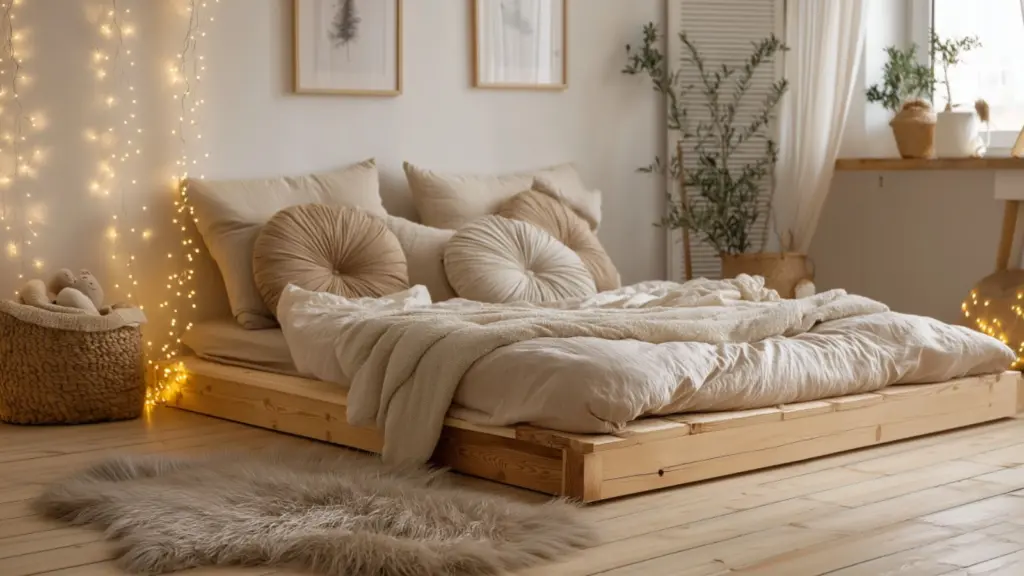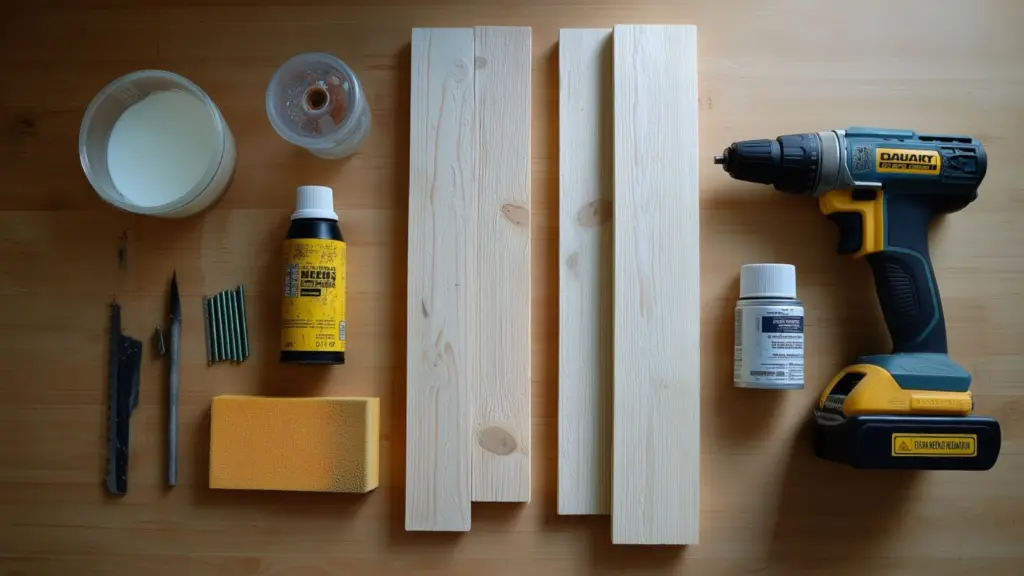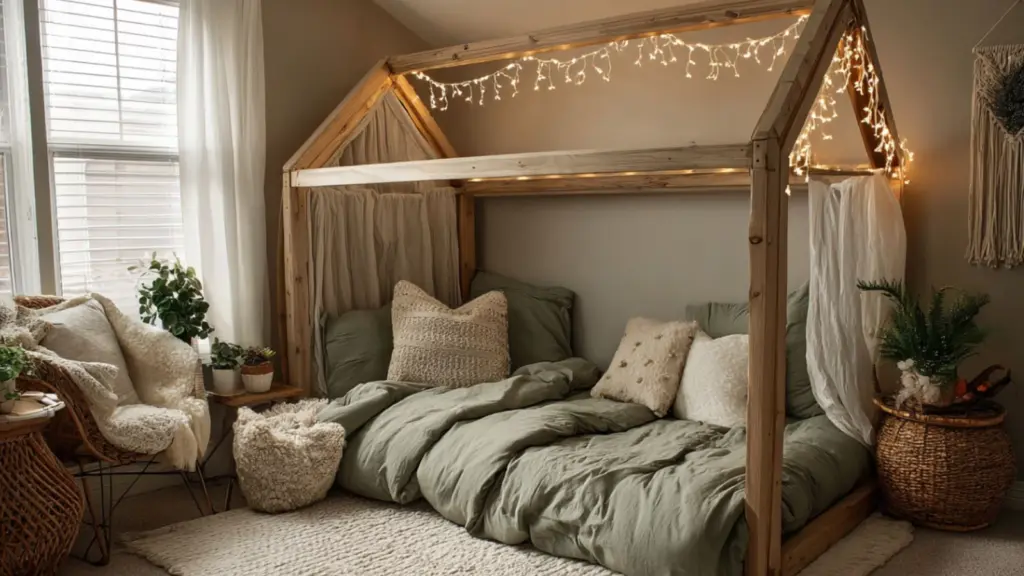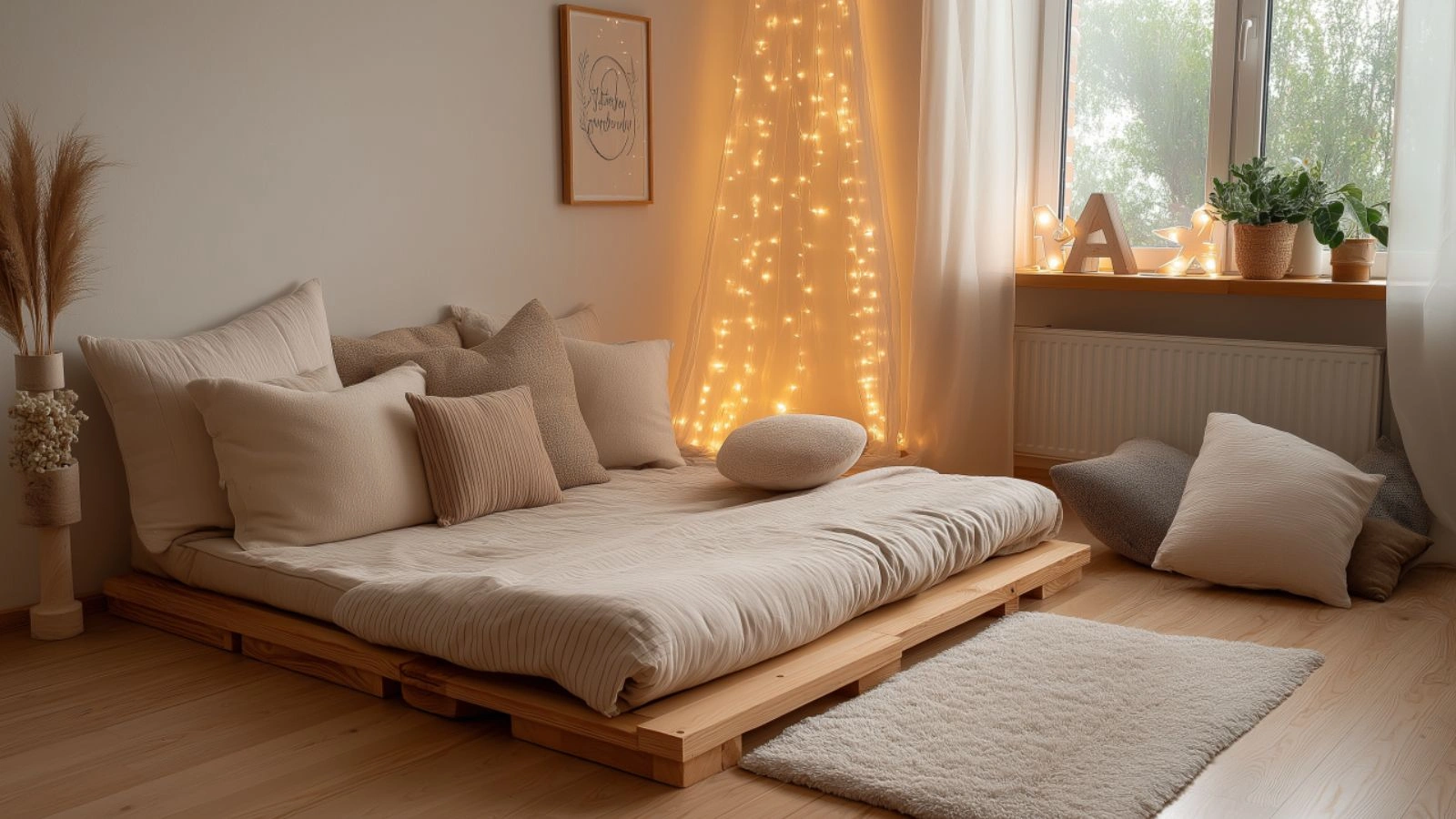Affordable Floor Bed Toddler Plans You Can DIY Today for a Cozy and Safe Space
Table of Contents
Have you ever watched a toddler attempt to scale a tall bed just to reach their stuffed animal? Or seen them take a tumble trying to climb down independently? The transition from crib to bed is a milestone for both toddlers and parents—and one solution that’s gaining major traction is the floor bed.
Inspired by Montessori principles, toddler floor beds encourage independence, reduce fall risks, and promote better sleep habits. But beyond their functionality, floor beds are also incredibly versatile, affordable, and aesthetically pleasing—especially when you build them yourself. And let’s be honest, DIYing your child’s bed creates a deeper connection to their space.
In this guide, you’ll discover budget-friendly floor bed toddler plans you can DIY over a weekend. We’ll cover essential considerations like safety, materials, mattress types, and layout strategies. Plus, you’ll find expanded sections on beginner-friendly plans and design ideas for both boys and girls. Whether you’re working with a small bedroom or simply want a cozy, grounded look, these ideas will inspire you to create a safe, snug sleeping nook for your little one.
Benefits of Floor Beds for Toddlers

A toddler floor bed isn’t just a trendy choice—it’s rooted in both safety and developmental psychology. Choosing this style of bed brings a range of practical and emotional benefits for both toddlers and caregivers.
First, the safety aspect: traditional toddler beds are often elevated, which increases the risk of injury during sleep transitions or midnight tumbles. A floor bed minimizes those dangers. With the mattress placed directly on or near the floor, toddlers can move freely in and out without risk.
Second, the independence factor. When toddlers are given freedom to access their sleeping space without needing help, they develop a sense of control over their environment. This can positively affect bedtime routines and reduce tantrums.
Lastly, from a design standpoint, floor beds open up a world of creative possibilities. They give the illusion of more space in small rooms and work beautifully with minimalistic, boho, or Scandinavian decor styles.
Benefits at a Glance
| Benefit | Why It Matters | Practical Example |
|---|---|---|
| Promotes independence | Helps toddlers learn autonomy | Child can get into bed on their own |
| Improves safety | Reduces risk of falling from height | Great for kids who roll around in sleep |
| Easy to DIY | Simple structure requires few tools | Frame from basic wood boards |
| Stylish and minimalist | Fits modern nursery decor | Complements Montessori themes |
Materials and Tools You’ll Need

Before you get started, gathering the right tools and materials will save time and keep your DIY project on track. One of the perks of building a toddler floor bed is how simple the construction can be, especially with basic cuts and minimal joins.
Pine and plywood are common wood choices for DIY beds due to affordability, lightness, and ease of handling. Be sure to sand edges smooth and choose non-toxic finishes if you plan to paint or seal the wood. As for tools, a circular saw, drill, and sander will be more than enough for beginner builds.
Don’t forget to measure your mattress first! Whether it’s a crib-size, twin, or custom size, you’ll want the frame to match precisely to avoid movement or gapping.
Basic DIY Checklist
| Item | Purpose | Budget-Friendly Tip |
|---|---|---|
| Wooden boards (pine) | Frame construction | Use reclaimed wood if available |
| Sandpaper or sander | Smooth edges for safety | Hand-sanding works for small projects |
| Screws and brackets | Join and secure the structure | Corner brackets add strength easily |
| Circular saw or hand saw | Cutting boards to size | Ask hardware store to pre-cut |
| Drill with bits | Fastening wood pieces | Battery-powered drill recommended |
| Non-toxic sealant/paint | Finishing touch | Choose VOC-free, baby-safe options |
Beginner-Friendly DIY Floor Bed Plans

If you’re new to building furniture, don’t worry—there are toddler floor bed plans that are both approachable and stylish. A simple rectangle frame that supports a mattress is all you really need to begin. No complicated joints, angled cuts, or expensive tools required.
One easy idea is a floor bed frame with open slats. The slats keep airflow under the mattress, preventing mold, while still staying low enough for safe toddler use. Another beginner option is a flat base with guardrails on three sides, ideal for younger toddlers who move around in their sleep.
Decorative elements like rounded corners, soft paint colors, or fun shapes (like house-style frames) can be added later. Start with a solid structure—creativity can follow once it’s secure and safe.
Expanded Plan Breakdown: Basic Frame Bed
| Step | Instructions | Tip |
|---|---|---|
| 1. Measure mattress | Add 1”–2” clearance on all sides | Avoid tight fit to ease sheet changes |
| 2. Cut side panels | Use pine or MDF based on preference | Sand edges for toddler safety |
| 3. Attach slats/base | Space slats evenly or add solid base | Prevent mattress sagging |
| 4. Secure frame | Use screws and brackets for corners | Pre-drill to avoid wood splitting |
| 5. Finish edges | Paint or seal with non-toxic finish | Soft tones create a calming vibe |
Creative Themes for Toddler Floor Beds

Once the foundation is built, the fun begins: styling your toddler’s floor bed to match their personality or your decor theme. Whether you’re going for whimsical, rustic, modern, or gender-neutral, the floor bed design can adapt beautifully.
Popular themes include “house frame beds,” where the wooden frame mimics a little roof or cabin. Add fairy lights or hanging fabric to enhance the effect. For boho rooms, macramé wall hangings, earthy colors, and rattan baskets complement a grounded aesthetic. Prefer modern minimalism? Go with monochrome palettes, clean lines, and low-profile accessories.
Gender-neutral designs often include soft greys, sage greens, and natural wood. They’re timeless and easy to update as your child grows.
Floor Bed Theme Inspiration
| Theme | Key Elements | Decor Ideas |
|---|---|---|
| House Frame Bed | Roof-style wooden frame | String lights, fabric bunting |
| Boho Toddler Room | Woven textures, warm tones | Layered rugs, tassel pillows |
| Minimalist Modern | Sleek edges, solid colors | White walls, geometric art |
| Nature-Inspired | Earthy tones, wood finishes | Wall decals of trees or animals |
Safety Considerations Every Parent Should Know
Safety is the foundation of any good toddler room design. While floor beds are naturally lower to the ground, there are still important precautions to consider when building and styling.
First, check that all wood surfaces are smooth—no splinters, sharp corners, or exposed screws. Round edges with sandpaper or a router bit. Secure all joints tightly, especially on frames with slats or guardrails.
The mattress should be firm and fit snugly within the bed frame to avoid shifting. Avoid high-pile rugs directly under the bed that could lead to slips or uneven surfaces. Consider anchoring nearby furniture to the wall to prevent tipping if your toddler climbs.
Also, leave a buffer zone around the bed—don’t push it directly against the wall unless you use guardrails on open sides.
Toddler Bed Safety Table
| Consideration | Why It Matters | What to Do |
|---|---|---|
| Wood finish & edges | Prevents injuries | Sand and seal properly |
| Mattress fit | Avoids suffocation risk | Leave no more than 1” gap |
| Frame stability | Keeps bed from wobbling | Reinforce with brackets/screws |
| Surrounding furniture | Prevents climbing accidents | Anchor dressers/bookshelves to wall |
Storage and Layout Solutions for Small Toddler Rooms
If your toddler’s room is on the smaller side, integrating storage and smart layout choices is essential. A floor bed already creates a more open feel, but the real magic happens when you pair it with hidden storage and thoughtful spacing.
Start by placing the bed in a corner—this leaves the rest of the room open for movement and play. Under-bed baskets or low rolling bins are excellent for storing extra sheets, toys, or pajamas. Floating shelves on the wall can hold books and decor without taking up floor space.
You can also create a reading nook beside the bed with floor pillows and soft lighting. If your toddler is still in the toy-heavy phase, a vertical toy rack or pegboard can organize items without crowding the floor.
Small Room Layout Guide
| Area | Best Use | Example Setup |
|---|---|---|
| Corner placement | Opens up floor area | Place bed in far corner |
| Under-bed storage | Hidden space-saving | Shallow bins with labels |
| Vertical wall use | Keeps items accessible | Floating bookshelves or toy pegs |
| Dual-use rugs | Defines zones (sleep/play) | One rug under bed, one in play area |
Conclusion
DIYing a floor bed for your toddler isn’t just about saving money—it’s about creating a personal, safe, and empowering space that grows with your child. These beds offer a balance of functionality, safety, and style, making them perfect for modern families looking for affordable and meaningful design solutions.
By focusing on materials, structure, safety, and layout, you can craft a cozy retreat your toddler will love to call their own. And as they transition from crib to “big kid bed,” you’ll know you built not just a place to sleep, but a place where confidence and comfort begin.

